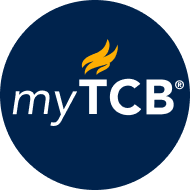
It may seem odd to use a dystopian world as a model for an office workspace, but that’s just what Citi did. Susan Catalano, Citi’s Managing Director and Chief Operating Officer of HR, was reading the Divergent series — about a future society broken up into five social factions cultivating different virtues — around the same time she was asked to assist with an open floor plan for the HR group’s new workspace. The book influenced the end product. “We created what we call neighborhoods — a compensation neighborhood, a learning and development neighborhood, etc. — to help individuals feel they ‘owned’ their space, even though no one has a designated workspace and no one has a private office,” she explains. Workspace is an emerging dimension of what the Families and Work Institute has identified as an effective workplace. The physical environment, if done right, can foster elements of an effective workplace like collaboration and autonomy, work-life fit and opportunities for learning. However, as many of the articles in the special section on office space in the October issue of HBR make clear, this is easier said than done. The issues that Catalano and her team faced in designing the new space ranged from minor — Where do employees put their personal items such as knapsacks or handbags? How do we stop people from speaking too loudly? to major — How can we be open and collaborative if people are separated by specialties? The space is a pilot in an initiative called CitiWorks, which is meant to optimize the company’s workspaces. It addressed two problems. First, people had been scattered in different offices throughout the metropolitan area, creating a fractured feeling. Second, an internal study showed that some offices, like most workplaces, were underutilized because of travel, vacation, illness and flexible working arrangements. The end result for the HR team is a consolidated space in Long Island City — an entire floor that overlooks New York City. The periphery of the space includes rows of workstations, each with large double-screened computers. In the center of the spaces are larger conference rooms, smaller meeting rooms, and private spaces for focused work. There are cozy seating areas scattered throughout the space as well as areas where people can meet or have lunch together. The design intends for no one to have an assigned desk and there are only 150 spaces for 200 people. For those who were initially resistant to losing their assigned space, Catalano says, “it was hard to argue with real data that the old space was underutilized.” Employees have a locker where they put their personal belongings, and then they set up in the morning where they want to work. There are sanitized wipes on every desk so that the shared workstations are left clean. The entire space is “green” so the window shades, lights and temperature are programmed to respond to usage and conditions, such as the amount of sunlight streaming into the space. Despite the beautiful space, old habits die hard. Karyn Likerman, Head of Inclusion Programs and Work-Life Strategies, admits, “Even though the space is completely unassigned seating, I typically sit in the same place each day and so do most of my colleagues.” The color-coded “neighborhoods” are in smaller sections of the larger space, enabling a sense of belonging, and also fostering a healthy sense of identity. One of the biggest benefits of the more-open space is innovation. People talk to others whom they might not have known before and as a result, are coming up with new ideas. Likerman relays one example: We have a new colleague who came in thinking his job would be mostly focused on affirmative action reporting and auditing. A conversation with someone who sits on the other side of the floor in recruiting got him thinking about how to involve our employee networks in diversity recruiting. After that conversation, he rolled his chair over to me, since I oversee our networks, and we came up with a new, innovative, and more formal recruiting approach to expand the network’s involvement. Other benefits include a greater sense of fun and camaraderie. Now more people eat lunch together, instead of alone at their desks. The office neighborhoods have started planning fun, informal events — breakfasts or Friday afternoon mixers. “Many of these are people I have worked with for years but I never met them in person. Now, we get a chance to connect on a more personal level, and it’s fun,” says Likerman. And the smaller footprint has saved millions of dollars in Citi’s HR budget. To be clear, the new space alone didn’t create these results. The workspace has to be carefully managed — as does the transition to it. Here are some of the lessons learned from Citi’s experience: While neighborhoods have helped the HR group, the new setup is a work in progress. Catalano and her team remain focused on creating neighborhoods that give different groups a sense of belonging while ensuring they don’t inhibit a fully open and collaborative workspace. “I think,” Catalano surmises, “over time people will continue to come together as the neighborhood lines blur.” This blog first appeared on Harvard Business Review on 11/12/2014. View our complete listing of Talent Management and Strategic HR blogs.

myTCB® Members get exclusive access to webcasts, publications, data and analysis, plus discounts to events.
Agile processes for stable teams
March 08, 2021
Three Ways to Navigate Political Divides at Work
October 07, 2020
Charts
Total rewards is a primary and powerful lever to support business strategy.
LEARN MORECharts
As labor shortages intensify and AI disrupts jobs, business leaders face mounting pressure to reskill and upskill their workforces fast.
LEARN MORECharts
Europe continues to struggle with weak productivity growth, but human capital strategies can help.
LEARN MORE
Charts
Infographic demonstrating the benefits of DEI in the workplace
LEARN MORE